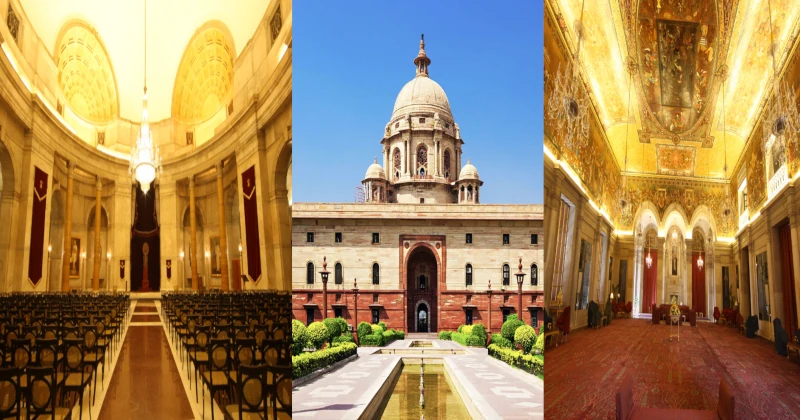Rapid Fire
Rashtrapati Bhavan Halls Renamed to Reflect Indian Cultural Values
- 26 Jul 2024
- 2 min read
In a bid to align with Indian cultural values and reduce traces of colonial influence, Rashtrapati Bhavan has officially renamed two of its prominent halls.
- Durbar Hall is now Ganatantra Mandap, reflecting the Republic concept, replacing the colonial term 'Durbar' (courts and assemblies of Indian rulers and the British).
- Ashok Hall has been renamed Ashok Mandap, honouring Emperor Ashoka and Indian cultural significance. This change aims to remove anglicized influences and align with the ethos associated with the word 'Ashok.'
- The Rashtrapati Bhavan statement mentioned that Ashok Hall was originally a ballroom. The word 'Ashok' signifies being free from sufferings or sorrow, and also refers to Emperor Ashok, a symbol of unity and peaceful co-existence.
- The word also refers to the Ashok tree, which holds deep significance in Indian religious traditions, arts, and culture.
- The Rashtrapati Bhavan in New Delhi is the largest residence of any Head of State in the world. It was originally built as the 'Viceroy House' for the British Viceroy of India and later renamed Rashtrapati Bhavan when India became a Republic in 1950.
- It was designed by British architect Sir Edwin Landseer Lutyens, who combined Indian, Mughal, and European architectural styles.
- In 2023, the world-renowned Mughal Gardens at the Rashtrapati Bhavan were also renamed as Amrit Udyan.
- Earlier in 2022, the PM inaugurated the 'Kartavya Path' symbolising a shift from erstwhile Rajpath being an icon of power to Kartavya Path being an example of public ownership and empowerment.
Read More: Kartavya Path






